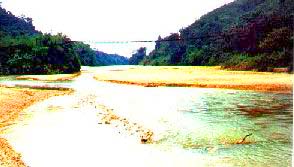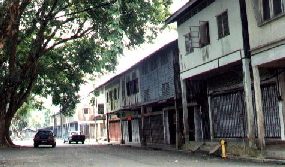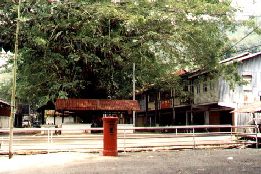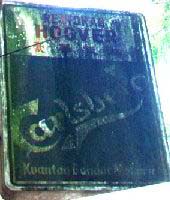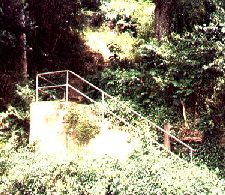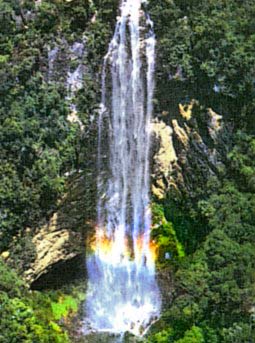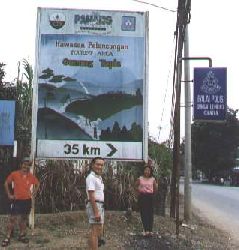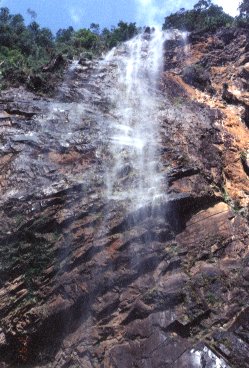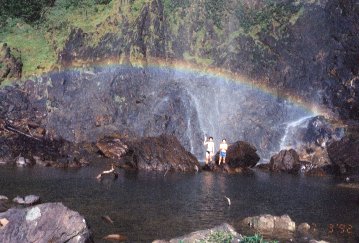Sleepy town of Sungei Lembing Sungei Lembing is a small township surrounded by hills on most sides except a single outlet. This is the flood plain where the Sungei Kenau flows.
Sungei Lembing town is in a unique valley where rain water from all the surrounding hill collects into the basin and gash out to sea craving out a broad flood plain. It is in this basin that tin ores were detected and in quantity large enough to support commercial mining operation. To appreciate the significance of this deserted town, one must look into its past, its glorious era. It was an outpost for the expatriates and in a boxed in town, the going-on was nothing but fun. To avoid the flood, the old access road was built into the hills. There was a downside to this decision; the town was hidden from outsiders. That was the scenario at the turn of the century. After the Second World Wars, the British miners returned to continue the mining operations. There were many reasons for its prosperity; the demand then and the subsidies given encouraged the high yields. The company dug deeper, eventually reaching depths nearing 2,000 feet. This made the mines unique by any standards.
That was the town’s heydays in the early ‘50s and a much-talked about mythical town. Such prosperity lasted 20 years up till the early ‘70s, the recession swept in. Falling prices, depletion of high yielding "veins" and the restriction in foreign labors were the opposing factors that led to the scaling down of operations. All this is history, with better flood control; the new road now runs parallel to the river in the plain itself. The modern road still goes under water during the monsoon time but such situation is inevitable. Today the mines have ceased operation totally and the mining shafts flooded. The two elevators were not replaced but stripped and sold as scrap.
This staircase besides the funeral palour leads to the viewpoint, one of the many that surround the town. The Waterfall This is the Gunong Tapis Rainbow Fall
Gunong Tapis in a hill some 35 kilometers inland. There is logger’s trail that leads to the foot of the fall but passable to off road vehicles only and also during the dry season. The trip by 4X4 vehicle is 35 minutes.
Here the falls drop vertically, and as it splashes down the water is broken up and reaches the bottom as mist.
With the sun shinning, a rainbow is present, and the period? Between sunrise and 11.00 am. Check up the weather before you go in to avoid being stranded by the rising water! |

